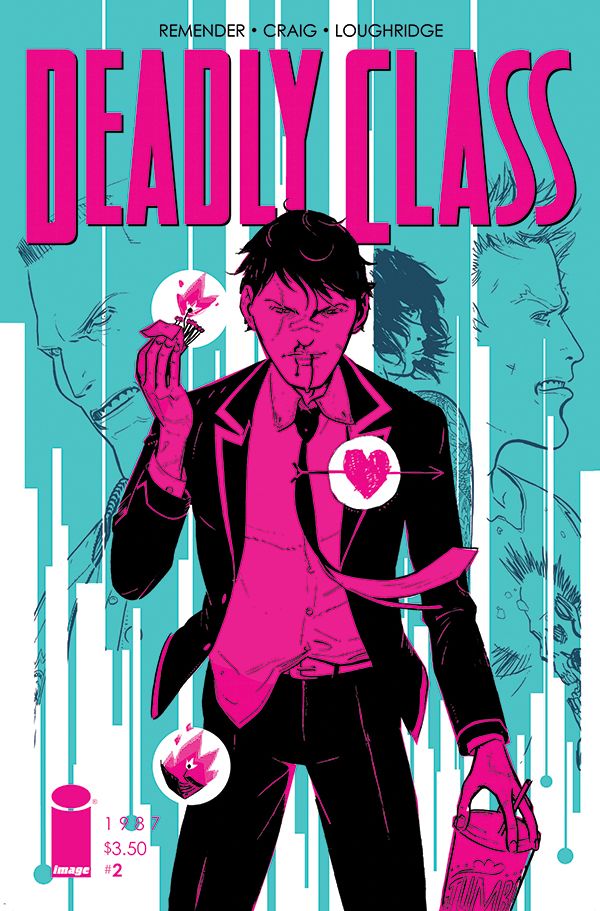"Deadly Class" #2 by Rick Remender and Wes Craig follows Marcus around during his first couple of days in Kings Dominion Atelier of the Deadly Arts, AKA the high school for assassins.
After Marcus' rescue and enrollment in the debut issue, "Deadly Class" settles into cookie-cutter lines as soon as Marcus sets foot on the school grounds. From its hidden location to its overwrought reception of Marcus, Kings Dominion falls into all of the tropes of a generic "new kid within grade school cliques" dynamic, with few if any deviations from stereotype.
Remender begins "Deadly Class" #2 by showing how Marcus holds himself apart from his new schoolmates, just as he was separated from the other kids at his old boy's school. Although he dismisses most of the other kids as poseurs, his own disaffected loner role is just as predictable and full of bravado.
Equally predictable are the other characters introduced by name. There are two potential love interests: Maria, who seems eager to get to know Marcus, and Saya, the surly mysterious girl who rescued Marcus in issue #1 and is now giving him the silent treatment. There's Viktor, a thuggish bully and jock and Shabnam, the bullied loser. Unsurprisingly, Marcus does Shabnam a favor and is rewarded with an information-dump lowdown on the lineup of cliques. While these cliches can still have spark, "Deadly Class" #2 feels bland because Remender does little to dress them up. Even the heated confrontation scene in the boys' shower feels old, although Remender is clever to overtly point out the homoerotic and sadistic elements.
"Deadly Class" #1 had a great premise enhanced by political conflict and social issues. In "Deadly Class" #2, Remender keeps the plot moving quickly, but the lack of further character development saps suspense. Even more than the named characters, the cliques fail to excite interest, especially since they are little more than racial stereotypes so far, teetering on being offensive in the case of the white supremacist "hillbillies."
Craig's art makes up for this somewhat. He creates a great gothic vibe with ample use of silhouettes and shadows. The backgrounds feel rich, and Loughridge's warm pastel palette complements Craig's curvy line variation and the classical details of the school's architecture. However, the story in "Deadly Class" #2 doesn't do much to match this visual atmosphere, so art feels like a mismatch or like wrapping paper laid over the events.
At the end of "Deadly Class" #2, Remender creates a subplot straight out of the horror genre. Unfortunately, this subplot also lacks any ability to shock. The scene in the barn and the disfigured face of a new external threat are stale, making the cliffhanger ending fall flat. It's been done before by a million horror films, as well as "Preacher" and other comics which covered the same kind ground in a more original way.
The story flows well, and in its transitions and skeletal structure, it works well enough to keep the reader going. However, "Deadly Class" still has the potential for and needs more than just smooth mechanics. Here's hoping that future issues bring back an emphasis on Marcus' origin story or else do more to shake itself free from stereotypes.

